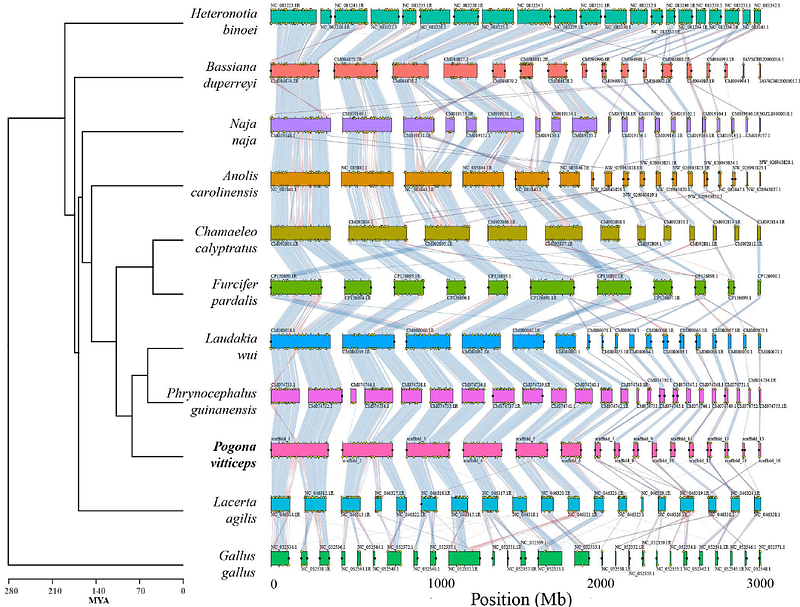A telomere to telomere phased genome assembly and annotation for the Australian central bearded dragon Pogona vitticeps

A telomere to telomere phased genome assembly and annotation for the Australian central bearded dragon Pogona vitticeps
Patel, H. R.; Alreja, K.; Reis, A. M.; Chang, J. K.; Chew, Z. A.; Jung, H.; Hammond, J. M.; Deveson, I. W.; Ruiz-Herrera, A.; Marin-Gual, L.; Holleley, C. E.; Zhang, X.; Lister, N. C.; Whiteley, S. L.; Xiong, L.; Dissanayake, D. S. B.; Waters, P. D.; Georges, A.
AbstractBackground: The central bearded dragon (Pogona vitticeps) is widely distributed in central eastern Australia and adapts readily to captivity. Among other attributes, it is distinctive because it undergoes sex reversal from ZZ genotypic males to phenotypic females at high incubation temperatures. Here, we report an annotated telomere to telomere phased assembly of the genome of a female ZW central bearded dragon. Results: Genome assembly length is 1.75 Gbp with a scaffold N50 of 266.2 Mbp, N90 of 28.1 Mbp, 26 gaps and 42.2% GC content. Most (99.6%) of the reference assembly is scaffolded into 6 macrochromosomes and 10 microchromosomes, including the Z and W microchromosomes, corresponding to the karyotype. The genome assembly exceeds standard recommended by the Earth Biogenome Project (6CQ40): 0.003% collapsed sequence, 0.03% false expansions, 99.8% k-mer completeness, 97.9% complete single copy BUSCO genes and an average of 93.5% of transcriptome data mappable back to the genome assembly. The mitochondrial genome (16,731 bp) and the model rDNA repeat unit (length 9.5 Kbp) were assembled. Male vertebrate sex genes Amh and Amhr2 were discovered as copies in the small non-recombining region of the Z chromosome, absent from the W chromosome. This, coupled with the prior discovery of differential Z and W transcriptional isoform composition arising from pseudoautosomal sex gene Nr5a1, suggests that complex interactions between these genes, their autosomal copies and their resultant transcription factors and intermediaries, determines sex in the bearded dragon. Conclusion: This high-quality assembly will serve as a resource to enable and accelerate research into the unusual reproductive attributes of this species and for comparative studies across the Agamidae and reptiles more generally.